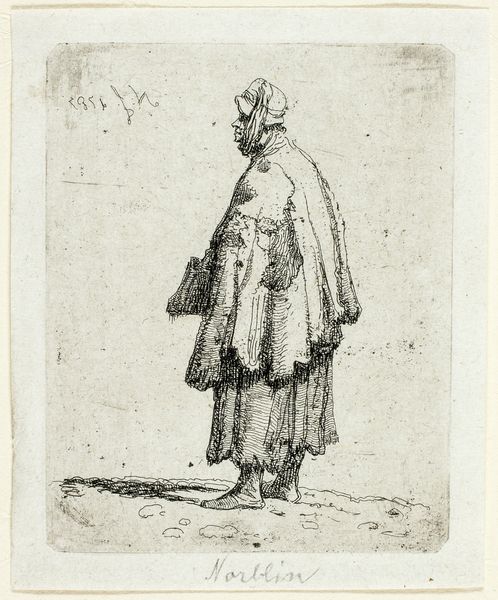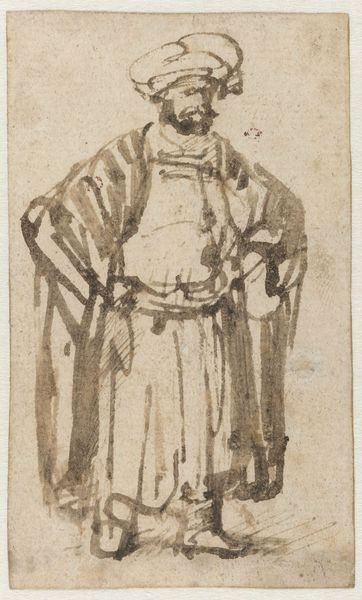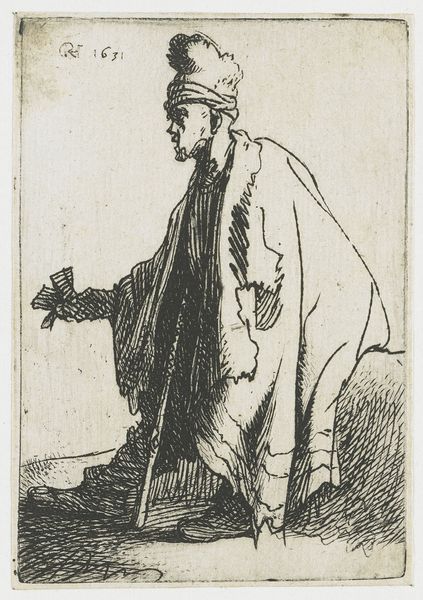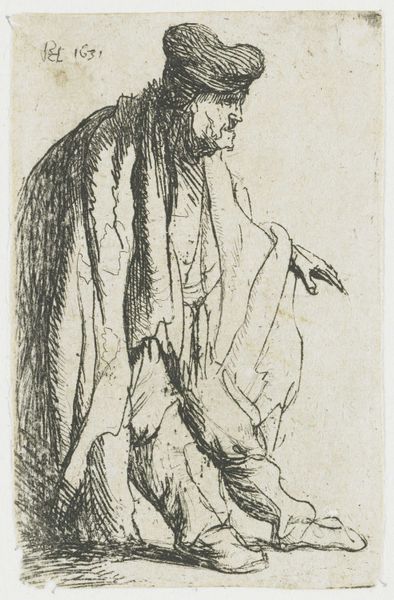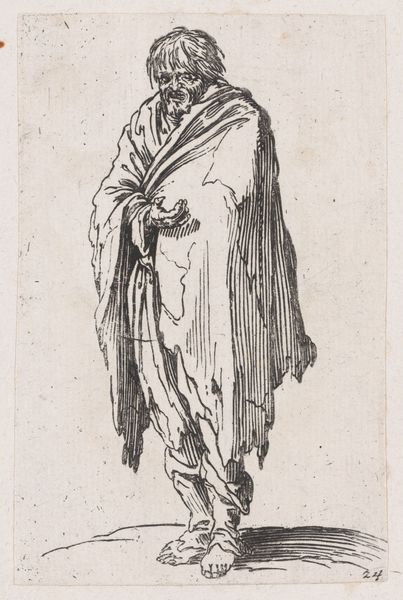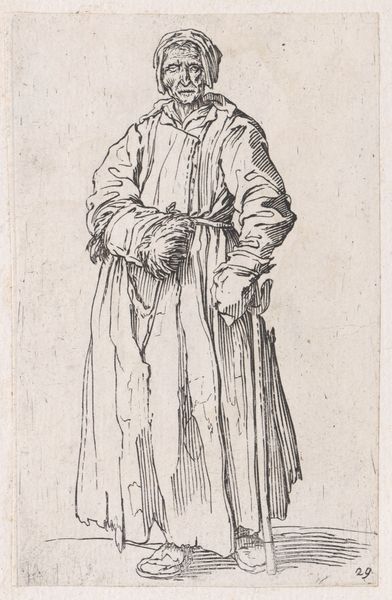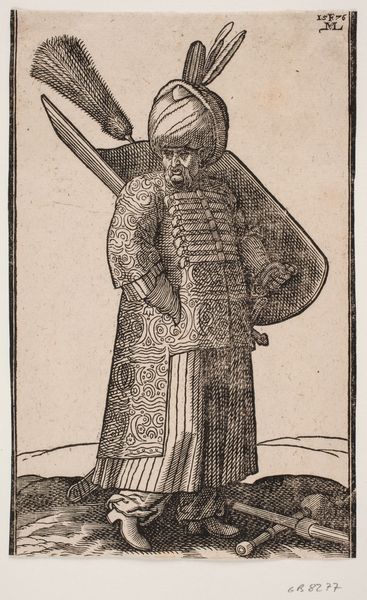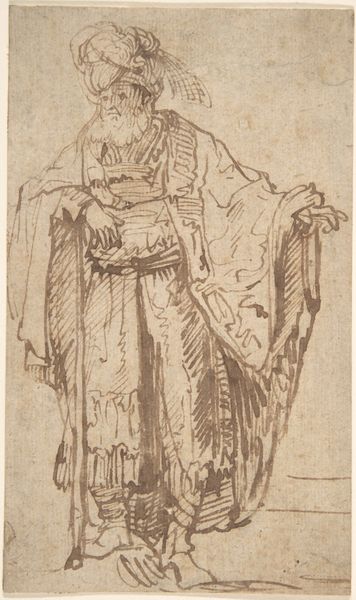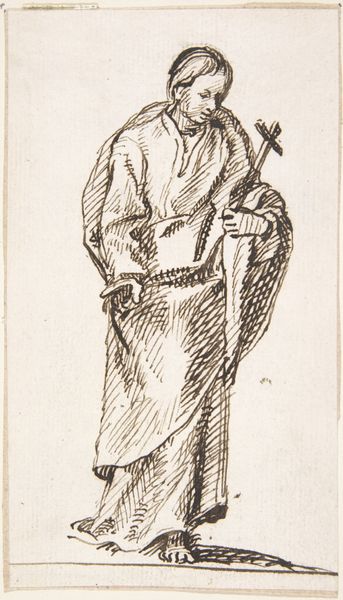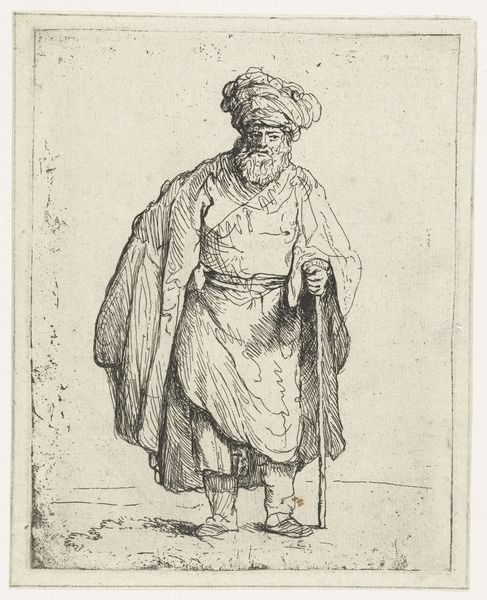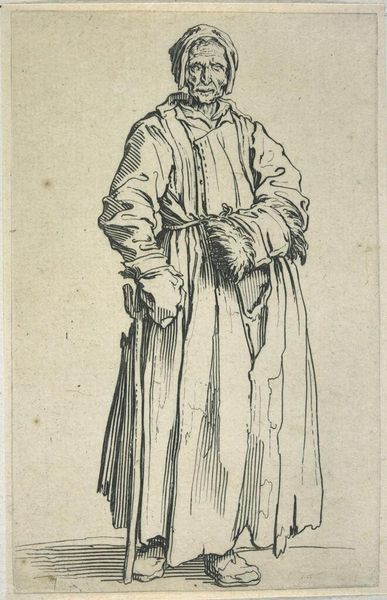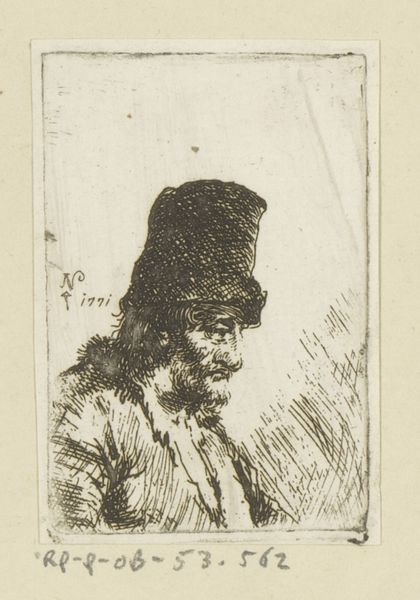
print, etching
#
portrait
#
baroque
#
dutch-golden-age
# print
#
pen sketch
#
etching
#
pencil sketch
#
figuration
#
pen-ink sketch
Dimensions: height 86 mm, width 60 mm
Copyright: Rijks Museum: Open Domain
Here is the audio guide script for the artwork provided: In this etching by Rembrandt van Rijn, we see a figure known as ‘The Leper’, created around 1631. The figure is wrapped in layers of cloth and turbans, standing with the aid of a staff and extending his hand. Historically, leprosy carried immense stigma, marking individuals as outcasts. The gesture of extending a hand, seen across cultures and eras, is a complex symbol. In ancient Roman art, a similar gesture might signify offering or supplication. Yet, the context shifts dramatically here. The leper’s outstretched hand is a plea, burdened by societal rejection. Consider the cyclical nature of symbols. Isolation, as experienced by those afflicted with leprosy, resonates with various forms of social exclusion throughout history. The emotional weight of this image lies in its stark depiction of human vulnerability and the deep-seated fear of contagion that continues to echo through time. It's a testament to how collective memory and subconscious anxieties shape our understanding of images and their enduring power.
Comments
No comments
Be the first to comment and join the conversation on the ultimate creative platform.
